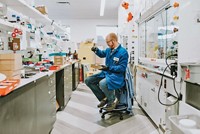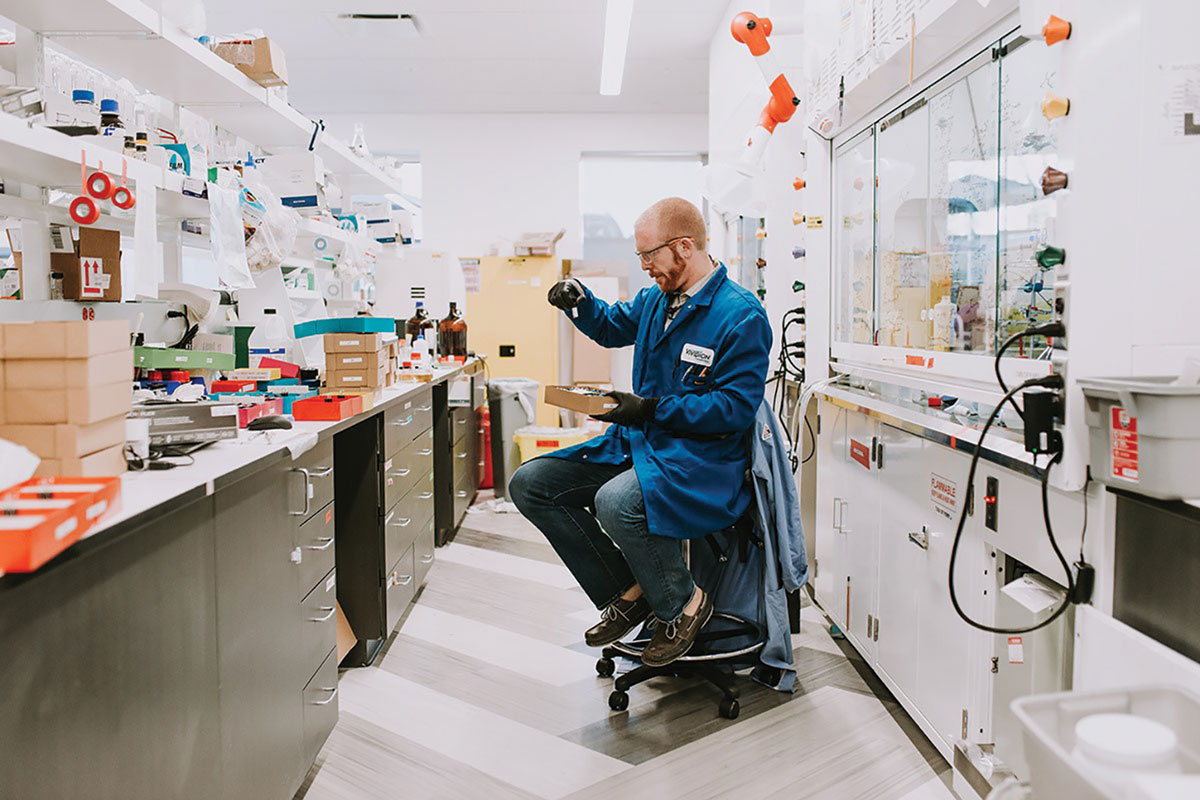Advertisement
Grab your lab coat. Let's get started
Welcome!
Welcome!
Create an account below to get 6 C&EN articles per month, receive newsletters and more - all free.
It seems this is your first time logging in online. Please enter the following information to continue.
As an ACS member you automatically get access to this site. All we need is few more details to create your reading experience.
Not you? Sign in with a different account.
Not you? Sign in with a different account.
ERROR 1
ERROR 1
ERROR 2
ERROR 2
ERROR 2
ERROR 2
ERROR 2
Password and Confirm password must match.
If you have an ACS member number, please enter it here so we can link this account to your membership. (optional)
ERROR 2
ACS values your privacy. By submitting your information, you are gaining access to C&EN and subscribing to our weekly newsletter. We use the information you provide to make your reading experience better, and we will never sell your data to third party members.
Business
Celgene picks Vividion for tough-to-drug protein partnership
Vividion is using fragment-based screening to develop new drugs, including targeted protein degraders, for ‘undruggable’ proteins
by Ryan Cross
March 5, 2018

Celgene is teaming up with San Diego, Calif.-based Vividion Therapeutics to tap into the start-up’s technology for discovering compounds that tackle tough-to-drug proteins.
Vividion was founded in 2014 and raised its first $50 million last year. The startup’s technology is based on the work of three Scripps Research Institute scientists: Benjamin F. Cravatt, Phil S. Baran, and Jin-Quan Yu, all scientific cofounders of the company.
In the new, four-year partnership, Vividion will receive $101 million up front from Celgene to identify and develop small-molecule drugs for cancer, inflammation, and neurodegenerative diseases. In particular, Celgene is interested in developing compounds that act on so-called undruggable proteins—ones known to cause disease but that lack clear footholds for small molecules to lock into and inhibit.
One potential workaround for targeting undruggable proteins is to tag them for destruction. A budding class of small molecules, called targeted protein degraders, can do just that by taking advantage of a natural protein disposal system in cells.
These degraders, also known as bifunctional molecules, are effectively two drugs in one. At one end, the compound binds the problematic protein target. At the other end, the compound binds a type of protein abundantly found in cells called an E3 ubiquitin ligase. That causes the targeted protein to be subsequently tagged and transported to the proteasome, the cell’s protein destruction center.

Vividion CEO Diego Miralles explains that the company’s fragment-based screening platform, first developed in Cravatt’s lab, is revealing compounds that bind proteins “that nobody has been able to touch before.” One recent study from Cravatt demonstrated a method for using chemical fragments to bind to the reactive amino acid cysteine in proteins that were previously assumed undruggable.
Miralles also credits the synthetic chemistry work of Baran and Yu, who created a library of covalent fragments that are more complex and chemically diverse than the chemical fragments used in standard screens. “I’ve never seen scientific founders as actively and productively involved as these three,” Miralles says.
Another defining point of Vividion’s research is its ability to screen fragments against a cell’s proteome—the entirety of its proteins—rather than the industry standard of isolated and purified proteins. Miralles says this approach helps the company find fragments that would make good building blocks for drugs much faster. If a fragment binds 500 proteins in a cell, it’s no good, but if it binds a single protein selectivity and specifically, that fragment is a promising starting point for designing a drug.
“This is a new era for small molecules,” Miralles says. “Until now, small molecules have been really limited in the number of targets they can go after.”
Vividion is screening fragments for developing targeted protein degraders, but Miralles says the same technique could be used to find compounds that act on undruggable proteins in other ways, such as through an allosteric effect or a protein-protein interaction. “I think there is going to be a resurgence and renaissance in small-molecule therapeutics,” Miralles says.
CORRECTION: This story was updated on March 5 to correct the description of how targeted protein degraders work.




Join the conversation
Contact the reporter
Submit a Letter to the Editor for publication
Engage with us on Twitter